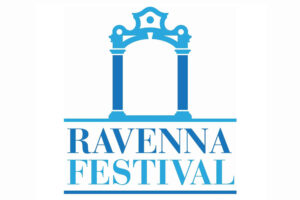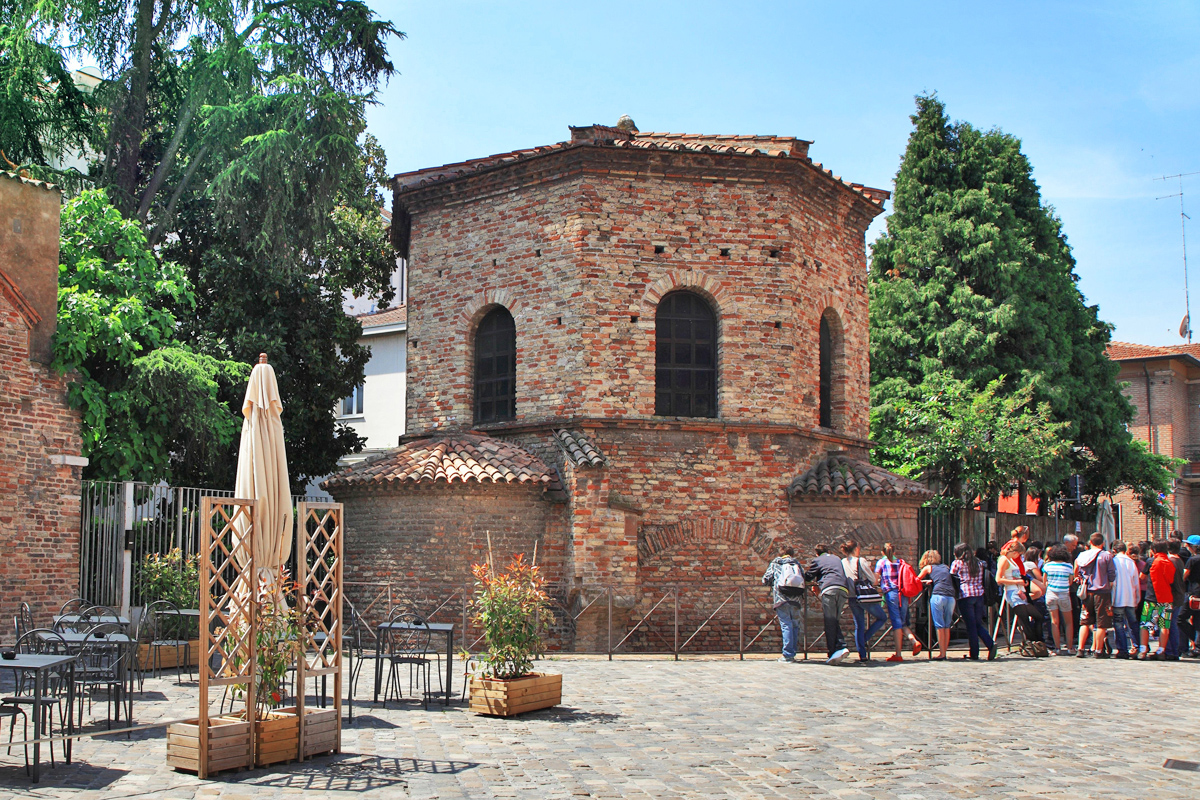PIAZZETTA DEGLI ARIANI is a urban space that owes its peculiarity to its historical heritage.
This ancient place bears witness to a particular moment of the history of Ravenna, in the immediate aftermath of the conquest of Ravenna at the hands of Theodoric.
In just a few dozen metres, this place hosts some of the most important Arian monuments of the city: the Arian Baptistery and Basilica dello Spirito Santo.
Piazzetta degli Ariani is the result of fifteen centuries of building and urban stratification, a unique testimony of the lost Christian iconography saved from the gradual changes that partially modified its original structure.
In this regard, suffice it to remember the story of the wall of the ancient episcopal palace, the Wall of Droctulf, partially destroyed by the bombs of World War II (see focus).
Arianism?
The Christological doctrine was elaborated towards the end of the 3rd century AD by presbyter, monk and theologian Arius, but was immediately condemned as heretic on the occasion of the First Council of Nicaea (325 AD).
According to this doctrine, the Son of God, being humanly generated, has neither eternal nor divine nature. It also rejected the concept of Trinity and supported the existence of a hierarchical relationship between Father and Son.
Thanks to bishop Ulfilas’ preaching (4th century AD), arianism was increasingly widespread among all the Germanic peoples. When they conquered Ravenna, the Ostrogoths even identified it as their religion.
Until the death of Theodoric and the expulsion of the Ostrogoths in 540 AD, this cult peacefully coexisted with Catholicism, and the Arian Baptistery, built here next to the Arian Basilica, was the counterpart to the Neonian Baptistery, related to the Catholic cult.
The treasures of the piazzetta
If you walk from Via Paolo Costa to Via degli Ariani, you immediately come across the portico of the Basilica dello Spirito Santo (lit. Basilica of the Holy Spirit), now dedicated to the Orthodox faith, but once the site of the great Arian Basilica of the same name.
According to the Liber Pontificalis, written by Andrea Agnello in the 9th century, this was the area of an Arian episcopal complex, similar to the Orthodox one, made up of a cathedral, a baptistery and an episcopal palace, now completely gone.
Archaeological excavations carried out in 1955 on the corner of Via Diaz and Via di Roma unearthed some large structures, built with bricks and blocks of Istrian stone and found approximately 2,20 metres from the walking surface.
Unfortunately, the works were carried out at speed, and it was only possible to attribute the materials to hexagonal brick floors and polychrome mosaics of late antique tradition, or in any case to buildings dating back between the beginning of the 5th and the end of the 6th century.
The core of the little square is the Arian Baptistery, declared one of the Unesco World Heritage Monuments of Ravenna due to its stunning polychrome mosaics.
It is the only baptistery in Italy dedicated to the Arian worship. With its elegant brick exterior and four small apses, the baptistery has fortunately remained intact over time.
The history of the baptistery is quite controversial. With the arrival of the Byzantines, the baptistery was reconsacrated to Catholic worship and dedicated to the Virgin Mary. From the 11th century, the Arian Baptistery and the Basilica were taken over by the Benedictine order until the Napoleonic suppression of the religious orders.
The building then passed from hand to hand between private individuals before being sold to the State, restored and reopened to the public.








